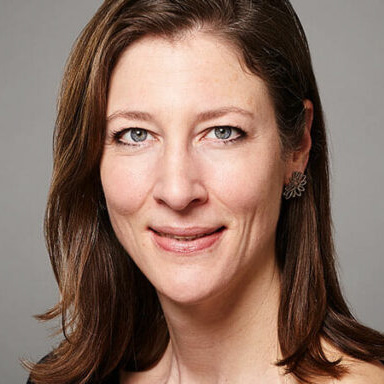Dr.-Ing. Cornelia Hillenherms is currently the President of the Council of European Aerospace Societies (CEAS) and Vice President of the German Society for Aeronautics and Astronautics (DGLR).
She is working as Managing Editor of the CEAS Aeronautical Journal, a journal created under the umbrella of CEAS and supported by the German Aerospace Center (DLR).
Q1: The Council of European Aeronautics Societies is a well-known entity to the European aerospace community and, of course, also to the readers of the EASN Newsletter. Yet would you like to share with our readers which are the current high-level objectives and priorities of CEAS?
Thank you for the opportunity to share the aims and activities of CEAS with the readers of the EASN Newsletter!
CEAS provides a communication and collaboration framework for the major aerospace societies across Europe. As you may know, CEAS currently comprises eleven European trustee member societies, with a combined total of around 35,000 individual members, located from Sweden to Spain and from the UK to Romania, as well as five corporate members: the European Aviation Safety Agency EASA, the European Space Agency ESA, the European Association of Aerospace Students EUROAVIA, the European Organisation for the Safety of Air Navigation EUROCONTROL and the von Kármán Institute for Fluid Dynamics VKI.
With its two peer-reviewed journals - the CEAS Aeronautical Journal and the CEAS Space Journal - CEAS has created a strong European platform for the dissemination of knowledge in all areas of aerospace science and technology. Both journals are published by Springer Nature, supported by DLR and ESA, and are indexed in Scopus; the CEAS Space Journal is also indexed in Clarivate's Emerging Sources Citation Index (ESCI).
CEAS is also committed to recognizing outstanding contributions to the advancement of aerospace in Europe. Based on proposals by our member societies, we grant the CEAS Gold Medal and the CEAS Distinguished Service Award as well as the CEAS Technical Awards, which are presented within CEAS’ technical committees.
Every odd year, CEAS jointly organises the Aerospace Europe Conference with one of its member societies. This year, our Italian trustee member, the Italian Association of Aeronautics and Astronautics (AIDAA), will host the CEAS/AIDAA conference alongside their AIDAA congress from 1–4 December 2025 at a vibrant venue in the heart of Turin. By the way, the deadline for submitting abstracts is 30 June! Have you registered for Turin yet? The early bird rate closes on 15 September 2025.
Please also check your calendars for this year's specialist conferences organised by the technical committees of CEAS:
- AIAA/CEAS Aeroacoustics Conference (embedded in the 2025 AIAA AVIATION FORUM), 21–25 July 2025, Las Vegas, NV (US)
- European Rotorcraft Forum ERF, 9–12 September 2025, Venice (Italy)
- International Conference on High-Speed Vehicle Science and Technology HISST, 22–26 September 2025, Tours (France)
Q2: As you know, the European Aerospace Science Network is the European academia representative in matters of research and education. What is the role of CEAS in the European Aerospace research and education ecosystem and which complementarities between CEAS and EASN could be developed in this context?
By its nature, CEAS represents a broad membership spanning the entire aerospace spectrum, from academia and research to industry. It is a unique forum to bring together the views of the professional aerospace societies of most European countries. Certainly, there is some overlap with other European societies, and I see this as an opportunity to discuss how societies like CEAS and EASN could improve their impact through collaboration. I am glad that we are currently revitalising our existing memorandum of understanding and look forward to identifying our way forward.
Q3: CEAS and EASN are both organizing annual Conferences addressed to the European Aerospace community. What could be done to ensure complementarity of these Conferences, to the extent it is possible?
So far, the EASN and CEAS conferences have been partly complementary, as EASN has focused on the academic aeronautical (now aerospace) community, while CEAS covers the entire spectrum of aerospace at universities and research institutions as well as in industry due to its structure.
In principle, I would like to see a maximum of one major high-level aerospace conference held in Europe each year, where our entire community can meet, exchange ideas, and develop shared initiatives. Ideally, important organisations such as EASN, CEAS, EUCASS, etc., would coordinate and harmonise their activities. In practice, however, this has proved difficult despite great efforts in the past. In light of lower travel budgets, particularly for our industry members, it is even more important to reduce the number of such events in favor of a focused, one-and-only European “must-have” conference! So, let’s see what the future holds…
Q4: Is there any other message you would like to share with the readers of the EASN newsletter?
In the current geopolitical situation, it is more important than ever to join forces and pull together in Europe. Applied to aerospace, I believe this means that we need to utilise our outstanding capabilities at various levels, i.e., in education, research & development and production, even more effectively in order to extend our technological lead, improve the efficient use of our resources and thus secure Europe's resilience and competitiveness. As societies, we have to support this by providing suitable platforms for technical exchange, the promotion of young talent and pan-European collaboration.
